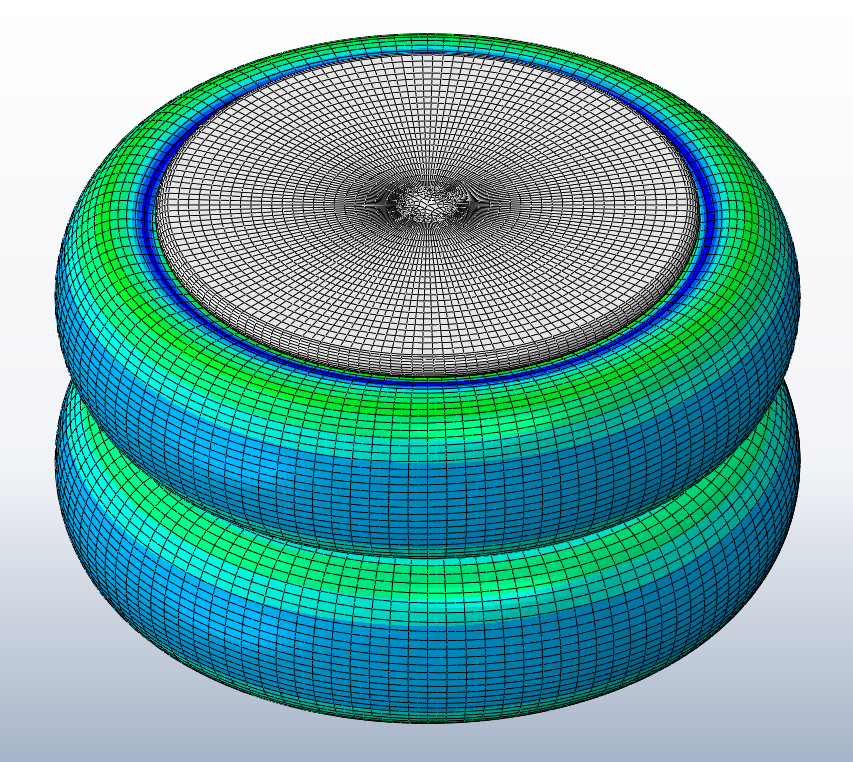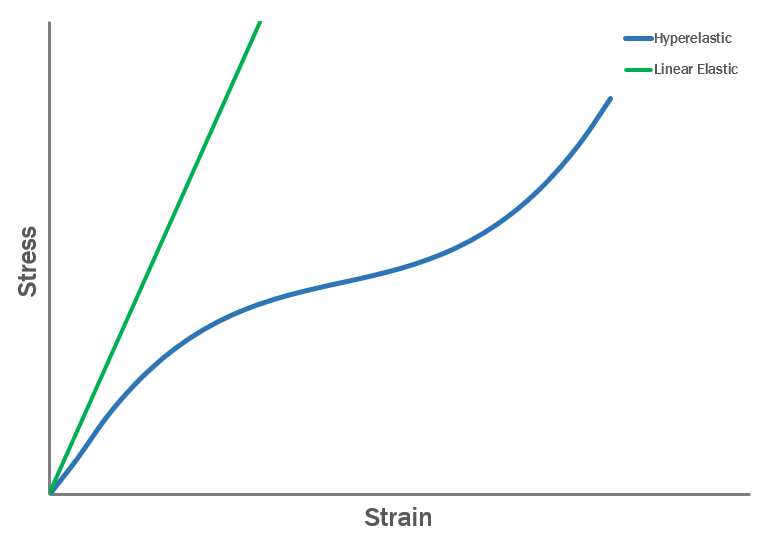POSTED 21.02.17
EASL has a wide range of skills and experience when it comes to structural integrity. Whether it’s analysis, assessment or design, our team of expert scientists and engineers are capable to handle all of our client’s needs. In this blog, Teddy Mbwadzawo takes a look at some of the applications of our Finite Element Analysis (FEA) Services on elastomers.
What are Elastomers?
Elastomers are characterized as materials containing long chain molecules and exhibit the ability to experience large deformations under applied loading and when unloaded they return to approximately their original shape.
Natural rubber also known as latex was the first kind of elastomer utilized in engineering applications and vulcanized elastomers followed. The latter refers to elastomers that have undergone the vulcanisation process, during which the long chain molecules of the elastomer are chemically linked at intervals along their lengths with adjacent elastomer chains forming crosslinks.
The properties of the crosslinks are affected by the curing conditions, temperature and time. Nowadays, the performance of elastomers is modified through the addition of fillers such as carbon black and silica. Carbon black particles are known to improve the strength, toughness, and abrasion resistance of elastomers. The use of fillers also reduces the cost of elastomer products which is why elastomers are used extensively in various engineering applications and also because of their wide availability.
Benefits of Finite Element Analysis of Elastomers
Elastomers can be compounded to achieve various mechanical and/or chemical properties depending on the application following extensive research.
Elastomer products now play a part in industries such as oil and gas, automotive and aerospace industry.
Due to their wide range of applications, it is important for designers and engineers to be able to predict the performance of these materials in service. This is especially true in applications where failure of these products can result in financial, safety and environmental implications.
Experiments allow engineers to predict the behaviour of elastomer products in service, however, some experiments such as fatigue can be time consuming and costly and this is where engineers can benefit from Finite Element Analysis (FEA) of elastomers, since using FEA can reduce costs and turnaround times.
FEA use in modelling elastomers
Despite their wide usage in many industrial applications, FEA of elastomers still remains a challenge. This is mainly because the stress-strain behaviour of elastomers is quite complex. Unlike metals which are characterised with a linear stress-strain behaviour, elastomers exhibit highly nonlinear stress-strain characteristics and they need to be modelled as hyper-elastic materials.
In FEA, the mechanical properties of a hyper-elastic material are described using a strain energy density potential, which describes the strain energy stored in the material per unit volume as function of strain at that point in the material.
This means that, stress is calculated from the principle of virtual work using the stored energy density function, unlike for linear elastic materials were stress is directly evaluated from the corresponding strain.
Nowadays commercial FEA packages offer various strain energy potentials also referred to as strain energy density functions, and each function exhibit different characteristics. Some functions accurately characterise the behaviour of elastomers under large deformations, however, fail at small deformations.
Some functions are better at capturing different deformation states whilst some functions are better at modelling single deformation states. Therefore, it is up to the user to select an appropriate strain energy density function capable of characterising the required material behaviour.
The selected strain energy density function requires calibration before use and this calibration is usually conducted using stress-strain data from appropriate experiments.
Multi-axial Experiments
If the FEA model includes subjecting an elastomer material to different deformation states, it is recommended that the strain energy density function is calibrated using stress-strain data from multi-axial experiments.
Some of the common multi-axial experiments are uniaxial tension, equibiaxial tension and planer shear. An appropriate strain energy density function capable of capturing the different deformation states is also recommended.
However, if the FEA model involves subjecting an elastomer material to a single uniaxial deformation state, it is cost effective and less time consuming to calibrate an appropriate strain energy density function using stress-strain data from uniaxial experiments only.
In summary, FEA of elastomers can help engineers predict the behaviour of elastomer products in service. However, unlike linear elastic materials which can be defined using an elastic modulus and Poisson’s ratio only, FEA of elastomers requires the selection of an appropriate strain energy density function to accurately represent the material behaviour and accurately calibrating a strain energy potential using data from suitable experiments.


Get in touch




